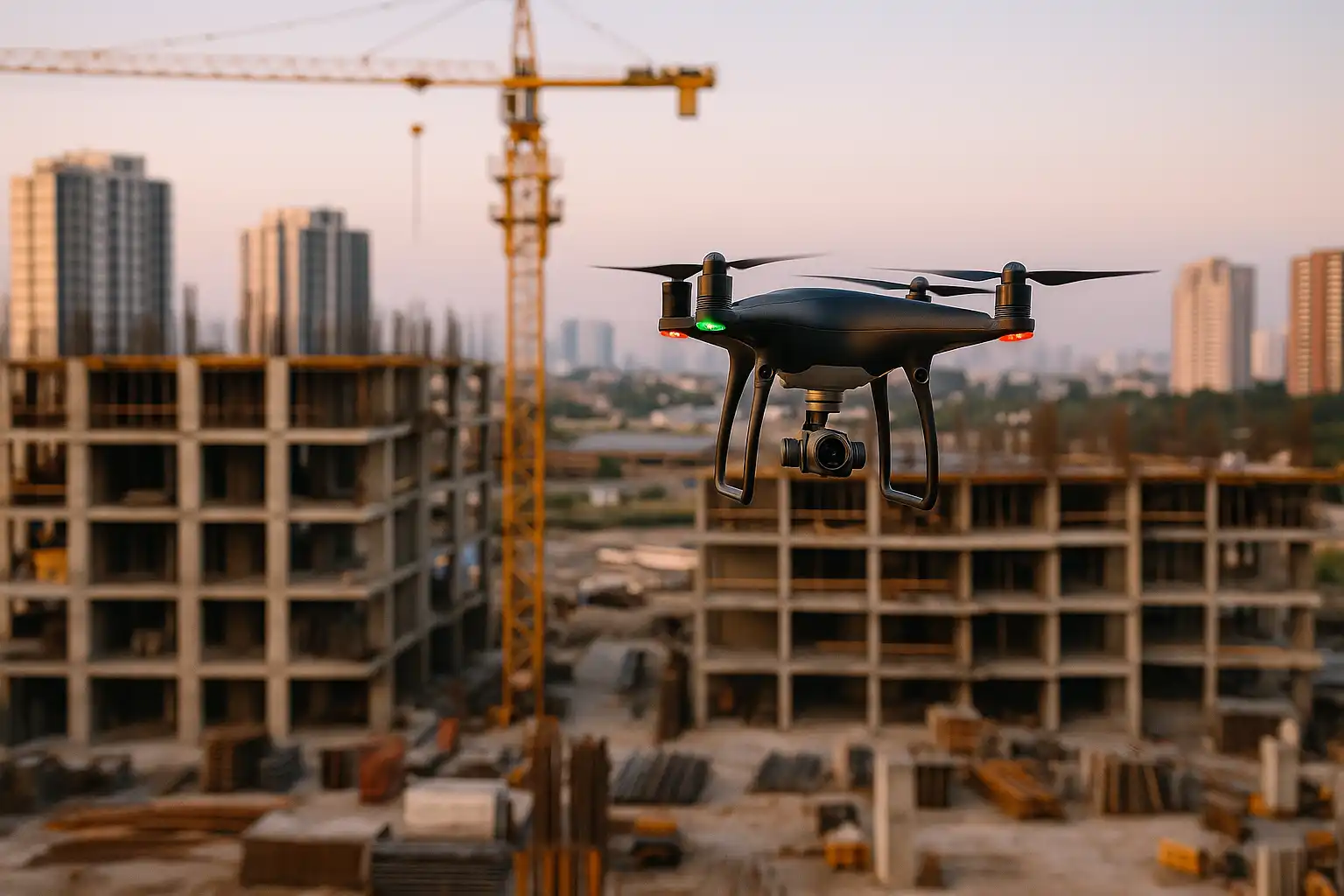
The Role of Drones in Modern Construction Monitoring
Introduction
The construction industry has long relied on traditional methods of site monitoring, progress tracking, and quality assurance. However, with the rapid evolution of technology, drones have emerged as a revolutionary tool in modern construction. Drones, also known as unmanned aerial vehicles (UAVs), provide a bird’s-eye view of construction sites, offering real-time data, high-resolution imagery, and precise measurements. Their integration into construction workflows has not only improved efficiency and safety but also enhanced project management, reducing costs and time delays. This blog explores how drones are transforming construction monitoring and why BATIMOI BTP embraces this innovative technology.
H4: Enhanced Site Visibility and Monitoring
One of the most significant advantages drones bring to construction projects is enhanced site visibility. Unlike traditional methods that require physical inspections and limited viewpoints, drones can capture high-resolution aerial images and videos of the entire site within minutes. Project managers, architects, and stakeholders can monitor construction progress remotely, ensuring that every phase aligns with the design specifications.
Key benefits include:
- Real-Time Updates: Drones can provide frequent and timely updates of construction progress, reducing the need for manual site visits.
- Comprehensive Coverage: Every corner of the site, including hard-to-reach areas, can be observed easily.
- Progress Comparisons: By overlaying current drone images over initial plans, discrepancies and deviations are quickly identified.
This level of visibility ensures projects stay on schedule, minimizing surprises and maintaining high-quality standards.
H4: Accurate Measurement and Surveying
Construction accuracy is paramount. Drones equipped with LiDAR, GPS, and photogrammetry technology allow for precise measurements of land, structures, and materials. Surveying, which once required days or weeks, can now be completed in hours.
Benefits of drone-assisted measurements include:
- Topographic Mapping: Creating detailed 3D maps of the construction site.
- Volume Calculations: Measuring stockpiles of materials like gravel or sand with accuracy.
- Layout Verification: Ensuring structures are built according to the planned dimensions.
This precision not only reduces human error but also supports informed decision-making, enhancing overall project efficiency.
H4: Improved Safety and Risk Management
Construction sites are inherently hazardous. Traditional monitoring often exposes personnel to risks such as falls, heavy machinery accidents, or unstable terrain. Drones mitigate these risks by providing remote observation, reducing the need for workers to access dangerous areas.
Advantages include:
- Hazard Identification: Drones can detect potential hazards early, such as structural weaknesses or unsafe working conditions.
- Safety Compliance: Ensuring the site adheres to safety regulations through continuous aerial monitoring.
- Emergency Response: Quickly assessing incidents from above to guide emergency interventions.
Incorporating drones in construction monitoring significantly enhances workplace safety, protecting both personnel and assets.
H4: Cost and Time Efficiency
Time is money in construction. Drones accelerate processes that would otherwise be slow, labor-intensive, and expensive. Routine inspections, progress tracking, and material assessments can be completed faster, reducing labor costs and preventing delays.
- Reduced Labor Costs: Fewer manual inspections and ground surveys are needed.
- Faster Reporting: Data is instantly available for analysis, decision-making, and stakeholder reporting.
- Early Problem Detection: Identifying issues early prevents costly rework or delays.
This efficiency makes drones an indispensable tool for modern construction management.
H4: Integration with Advanced Software
The data collected by drones can be integrated into construction management software for comprehensive analytics. Tools like Building Information Modeling (BIM) and project management dashboards allow teams to make better-informed decisions.
- 3D Modeling: Aerial data can be converted into 3D models for planning and visualization.
- Progress Tracking: Compare the as-built site to the as-designed plans for accuracy.
- Predictive Analysis: Analyze trends to forecast potential delays or budget overruns.
This combination of aerial intelligence and software analytics ensures a seamless workflow and optimal resource allocation.
Conclusion
The role of drones in modern construction monitoring cannot be overstated. From enhanced site visibility to accurate surveying, safety improvements, cost reduction, and integration with advanced software, drones empower construction teams to work smarter, safer, and faster. BATIMOI BTP leverages this technology to deliver projects with precision and professionalism, ensuring that every construction endeavor meets and exceeds client expectations.
For those looking to experience the efficiency and innovation that drones bring to construction monitoring, reach out to us. Contact BATIMOI BTP via email at info@batimoibtp.com or through our contact form to discuss how our drone monitoring services can elevate your next project.

